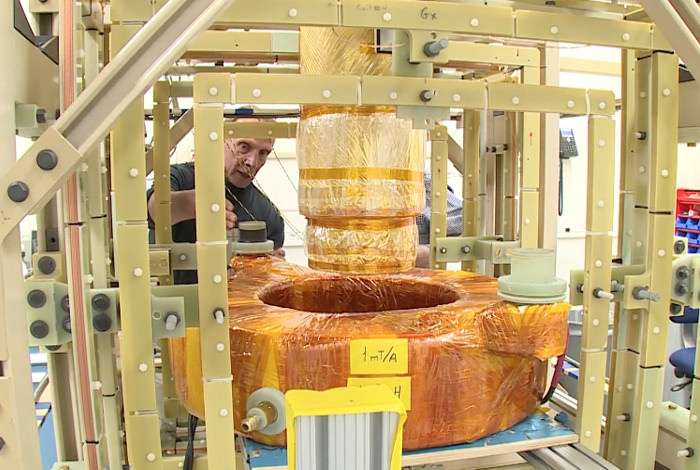Portable MRI could aid wounded soldiers and children in the third world

Scientists at Los Alamos National Laboratory are developing an ultra-low-field Magnetic Resonance Imaging (MRI) system that could be low-power and lightweight enough for forward deployment on the battlefield and to field hospitals in the World's poorest regions.
"MRI technology is a powerful medical diagnostic tool," said Michelle Espy, the Battlefield MRI (bMRI) project leader, "ideally suited for imaging soft-tissue injury, particularly to the brain."
But hospital-based MRI devices are big and expensive, and require considerable infrastructure, such as large quantities of cryogens like liquid nitrogen and helium, and they typically use a large amount of energy.
"Standard MRI machines just can't go everywhere," said Espy. "Soldiers wounded in battle usually have to be flown to a large hospital and people in emerging nations just don't have access to MRI at all. We've been in contact with doctors who routinely work in the Third World and report that MRI would be extremely valuable in treating pediatric encephalopathy, and other serious diseases in children."
So the Los Alamos team started thinking about a way to make an MRI device that could be relatively easy to transport, set up, and use in an unconventional setting.
Conventional MRI machines use very large magnetic fields that align the protons in water molecules to then create magnetic resonance signals, which are detected by the machine and turned into images. The large magnetic fields create exceptionally detailed images, but they are difficult and expensive to make.
Espy and her team wanted to see if images of sufficient quality could be made with ultra-low-magnetic fields, similar in strength to the Earth's magnetic field. To achieve images at such low fields they use exquisitely sensitive detectors called Superconducting Quantum Interference Devices, or SQUIDs.
SQUIDs are among the most sensitive magnetic field detectors available, so interference with the signal is the primary stumbling block. "SQUIDs are so sensitive they'll respond to a truck driving by outside or a radio signal 50 miles away," said Al Urbaitis, a bMRI engineer. The team's first generation bMRI had to be built in a large metal housing in order to shield it from interference.
Now the Los Alamos team is working in the open environment without the large metal housing using a lightweight series of wire coils that surround the bMRI system to compensate the Earth's magnetic field. In the future, the field compensation system will also function similar to noise-cancelling headphones to eradicate invading magnetic field signals on-the-fly.
"We've been very happy with some of the initial imagery that's been produced from the lightweight, second generation system," said Espy. "It really shows that, with additional development, these systems could be relatively easy and inexpensive to deploy."
Provided by Los Alamos National Laboratory



















